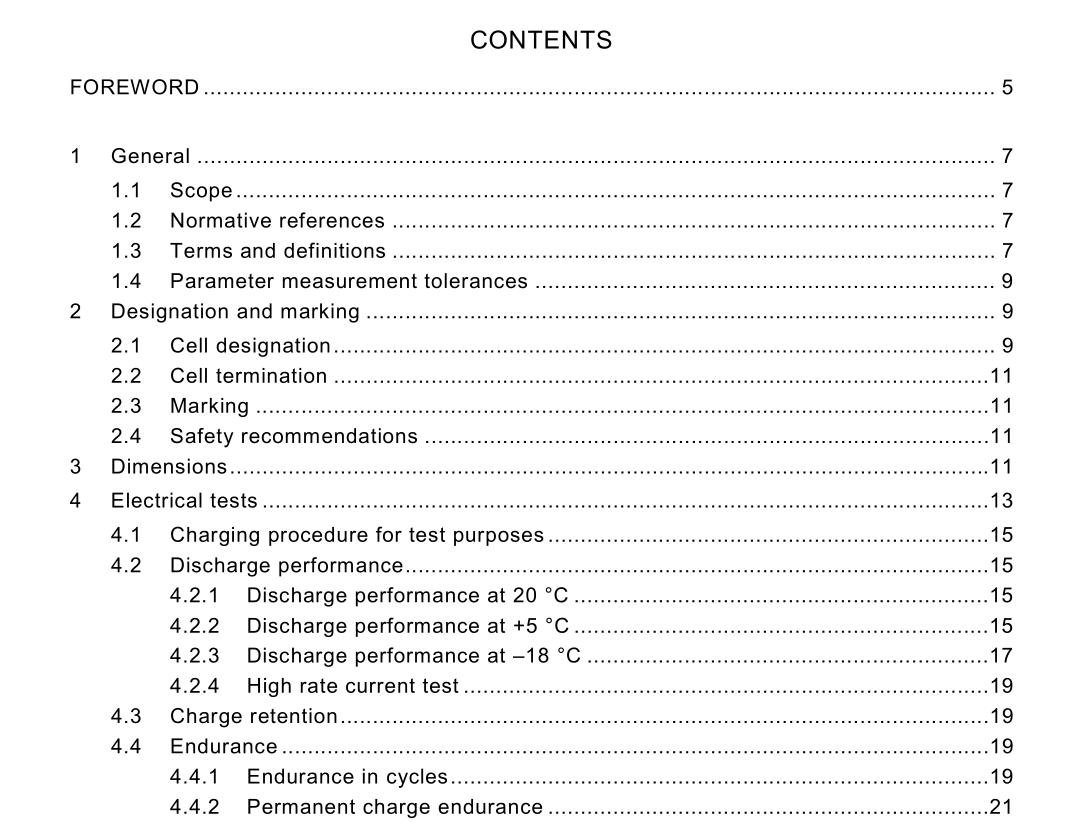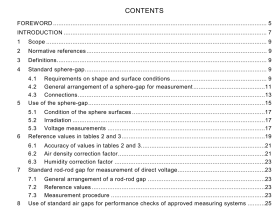IEC 60622 pdf download

IEC 60622 pdf download.Secondary cells and batteries containing alkaline or other non-acid electrolytes – Sealed nickel-cadmium prismatic rechargeable single cells
1 General
1.1 Scope This International standard specifies marking, tests and requirements for sealed nickel- cadmium prismatic secondary single cells. NOTE In this context “prismatic” refers to cells having rectangular sides and bases. Where there exists an IEC standard specifying test conditions and requirements for cells used in special applications and which is in conflict with this standard, the former takes precedence. 1.2 Normative references The following referenced documents are indispensable for the application of this document. For dated references, only the edition cited applies. For undated references, the latest edition of the referenced document (including any amendments) applies. IEC 60050-486, International Electrotechnical Vocabulary – Chapter 486: Secondary cells and batteries. IEC 60051 (all parts), Direct acting indicating analogue electrical measuring instruments and their accessories IEC 60410, Sampling plans and procedures for inspection by attributes IEC 60417 (all parts), Graphical symbols for use on equipment. IEC 60485, Digital electronic d.c. voltmeters and d.c. electronic analogue-to-digital converters IEC 61438, Possible safety and health hazards in the use of alkaline secondary cells and batteries – Guide to equipment manufacturers and users. 1.3 Terms and definitions For the purpose of this International Standard, the definitions contained in IEC 60050-486 and the following apply. 1.3.1 sealed cell cell which remains closed and does not release either gas or liquid when operated within the limits of charge and temperature specified by the manufacturer. The cell is equipped with a safety device to prevent dangerously high internal pressure. The cell does not require addition to the electrolyte and is designed to operate during its life in its original sealed state
2 Designation and marking
2.1 Cell designation Sealed nickel-cadmium prismatic secondary single cells shall be designated by the letters “KC” followed by a third letter L, M, H or X which signifies: • low rate of discharge (L); • medium rate of discharge (M); • high rate of discharge (H); • very high rate of discharge (X).2.2 Cell termination This standard does not specify cell termination. 2.3 Marking Each cell shall carry durable markings giving the following minimum information: • designation as specified in 2.1, (in addition, it is permissible for a manufacturer to use his own type designation); • name or identification of manufacturer or supplier; • positive terminal: either a red washer or an indented or raised symbol, (see graphical symbol 5005 of IEC 60417). 2.4 Safety recommendations The manufacturer shall provide recommendations for the safe handling of the cell. See also IEC 61438.
4.4.2 Permanent charge endurance The cell shall have been prepared in accordance with 4.1. This shall be immediately followed by charging the cell at 0,02 I t A for a period of 91 days. The cell shall then be discharged at 0,2 I t A as specified in 4.2.1. This cycle shall be repeated three times. A short delay between cycles should be allowed in order to start a new cycle at a convenient time. Precautions shall be taken to prevent the cell case temperature from rising above 30 °C during the test, e.g. by spacing the cells or providing a forced air draught if necessary. The duration of discharge obtained after the completion of four subsequent cycles as defined above shall be not less than 4 h 15 min. Leakage of liquid electrolyte shall not occur during this test. 4.5 Charge acceptance at constant voltage This standard does not specify a charge acceptance test at constant voltage. Charging at constant voltage is not recommended.4.6 Overcharge The cell shall have been prepared in accordance with 4.1. This shall be immediately followed by charging the cell at a constant current of 0,03 I t A, for 28 days, in an ambient temperature of 20 °C ± 5 °C. Precautions shall be taken to prevent the cell case temperature from rising above 30 °C during the test, e.g. by spacing the cells or providing a forced air draught if necessary. After this charging operation, the cell shall be stored in an ambient temperature of 20 °C ± 5 °C for not less than 1 h and not more than 4 h. The cell shall then be discharged in an ambient temperature of 20 °C ± 5 °C at a constant current of 0,2 I t A to a final voltage of 1,0 V. The duration of discharge shall be not less than 4 h 15 min. Leakage of liquid electrolyte shall not occur during this test.









